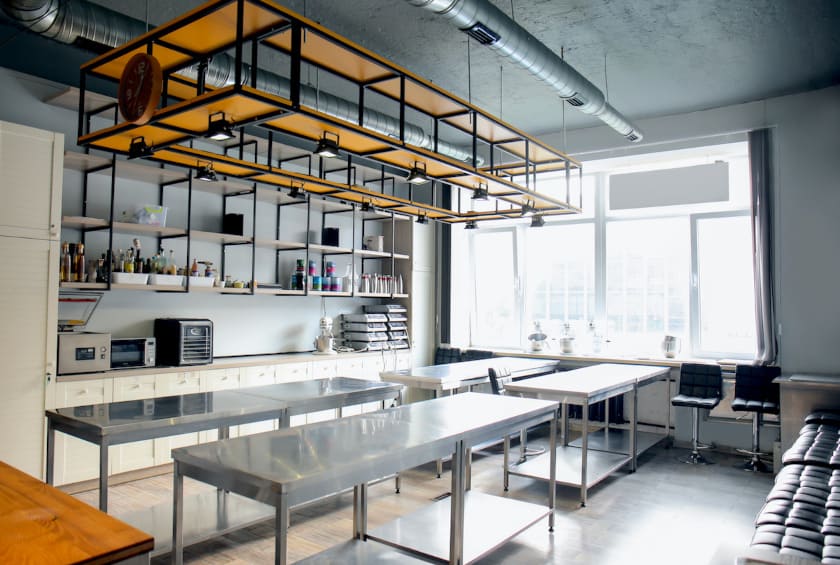The Ultimate Commercial Kitchen Maintenance Checklist

There are over one million restaurants in the United States, ranging from massive fast-food chains to small mom-and-pop bakeries, fine dining establishments, neighborhood family diners, hotel restaurants, and more. Each is equipped with a commercial-grade kitchen that must meet strict requirements to promote consumer health and safety.
You can’t afford to take shortcuts when it comes to the upkeep and maintenance of your commercial kitchen. Restaurant owners, managers, and head chefs who want to protect their consumers and be prepared for those unexpected inspection visits should use a health inspection checklist for restaurants to stay organized and up to standard. Here’s a quick template you can use to help ensure your kitchen is properly maintained.
What is a Commercial Kitchen Maintenance Checklist?
A commercial kitchen maintenance checklist is a form used by restaurant managers and head chefs to ensure that every part of their kitchen is working properly.
A kitchen in a small bakery will have different maintenance needs than a large commercial kitchen in a hotel restaurant, so there’s not necessarily a one-size-fits-all template. That’s why many top-performing restaurant owners and managers are using Device Magic Mobile Forms to create custom kitchen maintenance checklists that are tailored to the unique needs of their kitchens.
What to Include In Your Checklist
Preventive maintenance is key in keeping your kitchen up and running. Being intentional about equipment maintenance can help to avoid costly repairs as well as prevent health and safety violations. Every kitchen maintenance checklist will look a little different, but in general, you should cover the following areas:
Griddles & Grills
Many commercial kitchens rely on griddles and grills to cook hundreds of hot meals a day. They are easy to use, easy to clean and help maximize space in the kitchen. Some things to add to your checklist regarding your grills and griddles include:
- Wipe down griddles and grills after use
- Clean burners
- Check grease filters
Dishwashers & Sinks
Whether you hand wash your dishes and cookware or run it through a commercial-grade cleaning system, the systems you use to clean and sanitize your dishes are an important part of maintaining a clean and orderly kitchen. Some things to add to your checklist regarding your dishwashers include:
- Clean the filter every 15-20 cycles
- Train employees to rinse food and debris from plates and cookware before loading the dishwasher to prevent clogs and drainage issues.
- Check chemical levels (detergent, sanitizer, rinsing aids)
- Inspect tank water and change regularly
- Look for chips, dents or damages to dish racks
Fryers
You’ll find a gas or electric fryer in any kitchen that serves large quantities of fried foods. Countertop fryers can maximize floor space for smaller kitchens and diners, while larger, busier kitchens may use multiple floor models to keep up with the demand for fried foods. Your maintenance checklist should include:
- Extract dirty oil regularly
- Clean fry baskets and inspect for damages
- Check and clean combustion fans
- Pay close attention to the quality of the oil you’re using in the fryer
- Check for gas leaks
Ranges
Arguably, the range is the most used piece of kitchen equipment. If it breaks down, it could not only cost you a lot of money but drastically reduce the efficiency of your kitchen. To ensure your commercial range continues to work effectively, add these elements to your checklist:
- Grease valve knobs regularly
- Burners and grates are cleaned and secure
- Move range and clean behind it
- Check thermostat is working properly
- Train kitchen staff to use ranges correctly to avoid safety hazards and damages
Fridges & Freezers
Careful temperature control is vital in preserving food and extending the life of cold and frozen items. When a refrigerator or freezer goes down in a commercial restaurant, it could mean thousands of dollars in lost food. Keeping an eye on all the different elements of your commercial refrigerators and freezers is key in commercial kitchen maintenance. Be sure to include the following in your checklist:
- Look over door hinges and closers
- Clean gaskets and lubricate hinges
- Check refrigerant level
- Check and adjust defrost timers
- Check electrical connections
- Inspect suction line insulation
- Calibrate thermometers
Storage Spaces
Dry food storage areas should be cleaned regularly, organized, and inspected for leaks, evidence of electrical issues, or temperature control issues. Some things to add to your checklist regarding your dry storage spaces include:
- Food and supplies are kept off of the floor
- All food is properly labeled
- Temperatures in dry food storage spaces are up to code
- Employees are trained in FIFO food storage practices (First In, First Out)
Floor Maintenance
When you think of commercial kitchen maintenance you may focus on the equipment inside of the kitchen and look over the foundational aspects of the kitchen, like the floors. Solid, clean, slip-free floors are a must to ensure safety in the kitchen. The most important step in maintaining a commercial-grade kitchen floor is by keeping it clean. Some things to add to your checklist kitchen regarding flooring include:
- Use a degreaser to get rid of grease and soils
- Remove floor mats, sweep, and mop regularly
- Look for cracks, holes, or bumps in the floor that could be a tripping hazard
- Ensure all floor drains are draining properly
Try Device Magic for Free
Whether you’re running a food truck, small diner, neighborhood cafe, or high-end restaurant, regular preventative maintenance in your commercial kitchen is crucial to provide a high-quality guest experience. With the Device Magic custom form builder, you can easily create a commercial kitchen checklist that covers every aspect of your unique kitchen.